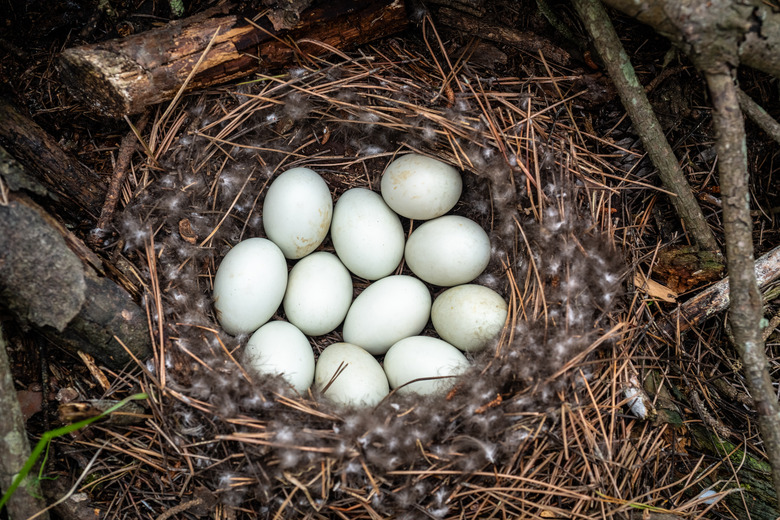White Bird Egg Identification
Birds lay eggs of different sizes, shapes and colors, but with a little detective work, you can work out which bird laid a particular egg. To identify white bird eggs, look at their markings, size and shape, and where the eggs are laid (in a nest or out in the open, for example). When you identify white bird eggs in your garden, you can help keep those birds and their eggs safe by providing the right foods and protection.
TL;DR (Too Long; Didn't Read)
Where you find a white bird egg and whether it is pure white or has markings can help you identify the bird that laid it. The size and shape of a white bird egg also provide clues to the bird's identity.
White Bird Egg Markings
White Bird Egg Markings
Bird eggshells are about 95 percent calcium carbonate – the stuff that makes up seashells, corals and pearls – which means their default color is white. However, few species of birds lay pure white eggs. The other 5 percent of shells consists of elements containing pigments that give bird eggs different colors and patterns. Some bird species, such as the Eurasian collared-dove, American three-toed woodpecker and blue-throated hummingbird, lay pure white eggs with no markings. Other bird species lay white eggs with markings. For example, the American kestrel lays white to pale brown eggs that are usually spotted with brown and gray, the house sparrow lays white to greenish-white eggs, and the cave swallow lays white eggs that are finely spotted with brown and purple.
White Bird Egg Size and Shape
White Bird Egg Size and Shape
As a general rule, the bigger the bird, the bigger the egg. The California condor lays the largest eggs of any U.S. bird species at about 4.3 inches long. At the other end of the scale, hummingbirds lay eggs as small as one-half inch. Egg shapes are diverse among species. Some eggs are oval; others are globelike, raindrop-shaped or pear-shaped with a pointed end, known as pyriform. At one point, scientists theorized that eggs on cliffs evolved to be pyriform so they would be less likely to roll away, but they now believe the egg shape is related to how good at flying the bird is. Birds that are good flyers, like swifts, usually lay eggs that are pointier or more elongated because their streamlined bodies affect the formation of their eggs. This applies to eggs of all colors, not only white eggs.
White Bird Egg Nest
White Bird Egg Nest
The eggs of hole-nesting birds are generally white or bluish-white to let parent birds find them easily and keep them safe from damage. Because they are usually well hidden inside the nest, it's less important for the eggs to be camouflaged. Examples of hole-nesting birds are woodpeckers, owls, kestrels and some flycatchers and swallows. Birds that lay their eggs in the open and on the ground, such as plovers, gulls, most ducks, geese and swans, need their eggs to be well camouflaged, so they usually lay brown or speckled eggs.
Cite This Article
MLA
Gillespie, Claire. "White Bird Egg Identification" sciencing.com, https://www.sciencing.com/white-bird-egg-identification-6677488/. 22 November 2019.
APA
Gillespie, Claire. (2019, November 22). White Bird Egg Identification. sciencing.com. Retrieved from https://www.sciencing.com/white-bird-egg-identification-6677488/
Chicago
Gillespie, Claire. White Bird Egg Identification last modified March 24, 2022. https://www.sciencing.com/white-bird-egg-identification-6677488/
